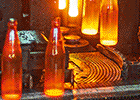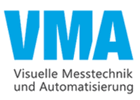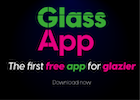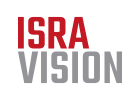Glass packaging production in Europe grew by 1% in volume (tonnes) and by 1% in unit terms in the first half year 2018 compared to the previous half year according to data published today by the European Container Glass Federation, FEVE. The growth is in line with the Full Year 2017 data, which recorded a growth of 2% in weight terms and 2.4% in units and compares favourably with the historical trend since 2012. Between 2012-2017, production has increased by almost 1.7 million tonnes (8.3% increase) or 6.4 billion units (8.9% increase). Generally, all food and beverage market segments experienced a demand growth for glass, and the outlook is very positive also for the flaconnage sector for perfumery, cosmetics and pharmacy.
We are encouraged by this positive trend which confirms our belief that brands and consumers are switching to glass for environmental reasons”, comments Adeline Farrelly – FEVE Secretary General.
This positive market dynamic for glass reflects an increasing consumer engagement with environmental causes. Consumers – and particularly millennials – are increasingly aware of the impact their daily lifestyle can have on the environment: ‘plastics pollution’ has been amongst the most searched topics on Google in 2018 in UK. Sustainability is no longer a ‘buzzword’, now consumers see a direct link between their purchasing behaviour and major environmental issues, and they want to know more about the products they buy, and the way brands behave. According to a Unilever survey carried out in 2017, more than one in five (21%) of the people surveyed said they would actively choose brands if they made their sustainability credentials clearer on their packaging and in their marketing. A recent Europe-wide survey carried out with the Friends of Glass community states 78% of Europeans pay more attention on the environmental impact of their daily life and actions.
Due to the level of media and political attention on “marine littering”, not only plastics but all packaging materials have come under the spotlight, and consumers are more and more attentive to the way products are packed. In fact, this can drive product choice: the Friends of Glass research reveals that 73% of Europeans rate glass as the most ocean-friendly packaging, 78% rank it amongst top packaging choices when buying their food and beverage products, and 1 in 2 consumers say they use more glass than three years ago.
“This increased trust in glass from consumers is heartening for our industry. We are constantly making efforts to optimize the unique recycling properties of glass into a business model that is an authentic example of a Circular Economy. We work hard to improve our production technologies and product characteristics, to reduce energy use and minimize any environmental impact by using recycled glass.” says Adeline Farrelly.
Glass is more than ever the leading packaging material for spirits, wines and beer, while it is increasingly gaining share in the food, water and dairy sectors. It the second leading packaging material in Europe in terms of volume. The industry is strongly committed to champion glass as packaging of the future.

























